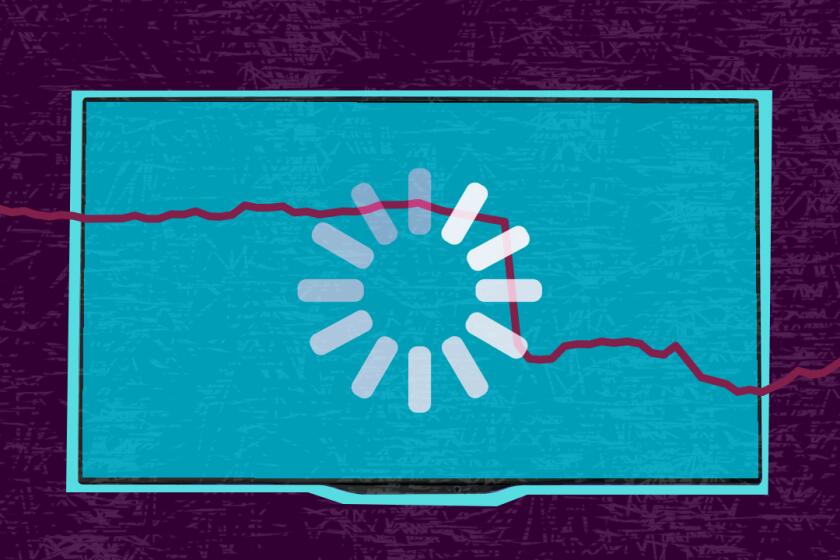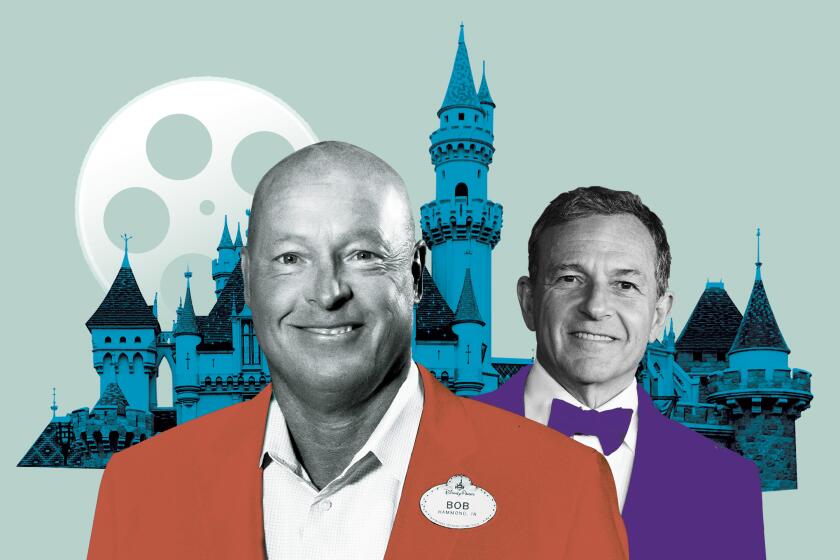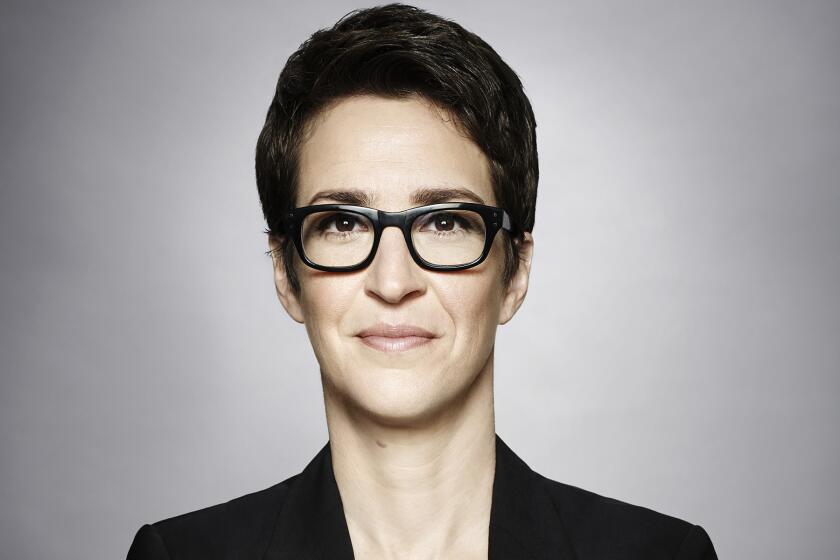Disney+ adds 12 million customers, a strong showing in an uncertain streaming market

- Share via
We don’t talk about Bruno. But amid growing questions about the growth and health of the streaming video business, Disney is more than happy to boast about its subscriber numbers.
Walt Disney Co.’s flagship streaming service Disney+ added nearly 12 million subscribers in its first quarter of fiscal 2022, bringing its total to 129.8 million, the Burbank-based entertainment giant said Wednesday. That’s up 37% from the service’s count a year earlier.
The growth significantly exceeded analysts’ expectations. On average, analysts polled by FactSet had anticipated 6.6 million new subscribers in the quarter.
Wall Street, which watches subscriber numbers like Marvel fans looking for Easter eggs, was pleased with the results.
Disney’s stock, which closed Wednesday at $147.23, surged 8% in after-hours trading, following its latest quarterly report. The company reported earnings and revenue that also topped analyst estimates.
The story of Disney+ had a fairytale beginning. The service launched with rapid growth and a hit show (“The Mandalorian”) and was quickly adopted by families desperate to entertain their kids during the COVID-19 pandemic.
Plus: Sundance is still happening. Why the future of arthouse cinema is on streaming.
Like all good second acts, the narrative soon became more complicated. Subscriber growth slowed in the fourth quarter of fiscal 2021. Executives acknowledged that it would take even more shows and movies to compete with rivals including Netflix (222 million subscribers) and HBO Max (74 million subscribers). Disney+ added a meager 2.1 million subscribers in the fourth quarter of last year.
But the first-quarter results seem to confirm executives’ warnings not to draw too many conclusions from a single three-month period.
Disney’s biggest growth has been internationally. In the U.S. and Canada, Disney+ has 42.9 million subscribers, up 18% from a year ago. Internationally, excluding the cheaper Disney+ Hotstar service in India, its count is 41.1 million, up 40%. In the most recent quarter, the service grew mainly in Europe and Asia, where Disney+ launched in countries such as South Korea. Disney+Hotstar has 45.9 million accounts, 57% more than a year earlier.
Disney is planning to spend big bucks to make its streaming dreams come true. The company recently said it would spend $33 billion on content overall in the current fiscal year, up from $25 billion in 2021. The ramp-up comes as analysts increasingly worry that viewers are binging shows and movies faster than studios can make them.
Netflix last month gave subscriber forecasts that fell short of Wall Street’s expectations, leading the stock to tumble. The results from Netflix raised broader questions about whether streaming is a good business and what is the limit on the number of subscriptions viewers are willing to pay for. Will the billions of dollars in content spending pay off?
For nearly two years, Bob Iger and Bob Chapek have run the company together. After an Iger farewell tour, one Bob remains.
Disney+’s growth is a relief for Chief Executive Bob Chapek, who has run the company for nearly two years, but until recently labored under the shadow of Bob Iger. The former CEO became executive chairman in February 2020 and took part in an extended farewell before officially leaving Disney at the end of last year.
Now it’s up to Chapek to accelerate Disney+’s growth, without Iger steering the company’s creative direction. Disney has maintained that quarterly numbers will fluctuate and that it’s still on track to reach its goal of 230 million to 260 million Disney+ subscribers by 2024.
The company has had some buzzy hits in recent months, with “The Book of Boba Fett” and Peter Jackson’s epic documentary “The Beatles: Get Back” drawing streaming audiences.
Disney is coming off a strong showing from the 2022 Academy Award nominations, which were announced Tuesday. The company earned 23 nominations — the second most behind Netflix’s 27 — for films such as Steven Spielberg’s “West Side Story,” Guillermo del Toro’s “Nightmare Alley” and the animated musical “Encanto.” Disney said Wednesday that “West Side Story” would start streaming on Disney+ on March 2.
Chapek has shaken up the movie theater business by remaining agnostic about exclusively releasing films in cinemas before they hit streaming services.
Speaking to analysts, Chapek used the success of “Encanto” to show that streaming can build entertainment franchises, contradicting a key argument theater owners often make in favor of the big screen.
“Encanto,” which had a muted run in theaters compared with previous Disney titles, became a hit on Disney+, with a chart-topping song (“We Don’t Talk About Bruno”) by Lin-Manuel Miranda and strong merchandise sales.
“We do not subscribe to the belief that theatrical distribution is the only way to build a Disney franchise,” Chapek said. “This quarter, audiences proved us right as ‘Encanto’ became a phenomenon within days of its arrival on Disney+.”
The company released several films that were box-office disappointments despite their critical acclaim, particularly among movies from its 20th Century Studios division (formerly 20th Century Fox). “West Side Story,” “Nightmare Alley” and Ridley Scott’s “The Last Duel” all received rave reviews, and yet did not bring audiences to theaters.
Disney has also broadened the scope of the content on Disney+ beyond its signature studio brands such as Pixar, Marvel and Star Wars. The company recently added early seasons of the ABC sitcom “Black-ish” to Disney+, as well as the spinoff “Grown-ish.”
Upcoming Disney+ content includes Pixar’s film “Turning Red,” which was turned from a theatrical release to a streaming exclusive in March. Marvel series “Moon Knight” also arrives next month. A highly anticipated “Star Wars” show, “Obi-wan Kenobi” starring Ewan McGregor, comes May 25.
Overall, Disney reported revenue of $21.8 billion in the three months that ended in January, exceeding the $20.3 billion analysts projected. Sales increased 34% from the same period a year earlier.
The company posted profit of $1.15 billion, up from $29 million a year earlier. Earnings per share of $1.06 topped Wall Street’s estimate of 74 cents.
Disney’s direct-to-consumer business, which includes steaming services Disney+, Hulu and ESPN+, grew revenue 34% to $4.69 billion. The segment’s operating loss grew to $593 million, compared with a loss of $466 million a year earlier, partly due to spending on Disney+.
Hulu ended the quarter with 45.3 million subscribers, up 1.5 million from the 43.8 million it had three months earlier. ESPN+ reached a total of 21.3 million subscribers, compared with 17.1 million in October.
Revenue from Disney’s parks, experiences and products more than doubled to $7.23 billion. Operating income from the parks and production segment ballooned to $2.45 billion, compared with a loss of $119 million a year earlier.
The TV networks business, which includes ABC and ESPN, was flat at $7.7 billion in sales, while operating profit declined 13% to $1.5 billion.
The content sales and licensing segment — which includes Disney’s film studio businesses — grew 43% to $2.43 billion in revenue. But the unit lost $98 million, compared with an operating profit of $188 million in the same quarter of 2021.













